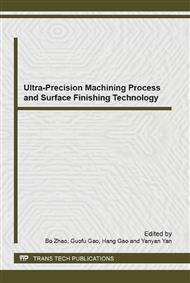[1]
Thomas W M, Nicholas E D. Friction stir welding for the transportation industries [J]. Materials & Design, 1997, 18(4-6): 269-273.
DOI: 10.1016/s0261-3069(97)00062-9
Google Scholar
[2]
Nandan R, DebRoy T, Bhadeshia H K D H. Recent advances in friction-stir welding – Process, weldment structure and properties [J]. Progress in Materials Science, 2008, 53(6): 980–1023.
DOI: 10.1016/j.pmatsci.2008.05.001
Google Scholar
[3]
Mishra R S, Ma Z Y. Friction stir welding and processing [J]. Materials Science and Engineering, 2005, 50(1-2) : 1-78.
Google Scholar
[4]
Wang Dayong, Feng Jicai. Process model of arc corrugation on friction stir weld [J]. Transactions of the China Welding Institution, 2004, 25(4): 46-50.
Google Scholar
[5]
Cui G R, Ma Z Y, Li S X. Periodical plastic flow pattern in friction stir processed Al–Mg alloy [J]. Scripta Materialia, 2008, 58(12): 1082-1085.
DOI: 10.1016/j.scriptamat.2008.02.003
Google Scholar
[6]
Chen Z W, Cui S. On the forming mechanism of banded structures in aluminium alloy friction stir welds [J]. Scripta Materialia, 2008, 58(5): 417-420.
DOI: 10.1016/j.scriptamat.2007.10.026
Google Scholar
[7]
Yan J H, Sutton M A, Reynolds A P. Processing and banding in AA2524 and AA2024 friction stir welding [J]. Science and Technology of Welding and Joining, 2007, 12 (5): 390-401.
DOI: 10.1179/174329307x213639
Google Scholar
[8]
Kang Ju, Luan Guohong, Fu Ruidong. Microstructures and Mechanical Properties of Banded Textures of Friction Stir Welded 7075-T6 Aluminum Alloy [J]. Acta Metallurgica Sinica, 2012, 47(2): 224-230.
Google Scholar
[9]
Jin H, Saimoto S, Ball M, et al. Characterisation of microstructure and texture in friction stir welded joints of 5754 and 5182 aluminium alloy sheets [J]. Materials Science and Technology, 2001, 17(12): 1605-1614.
DOI: 10.1179/026708301101509674
Google Scholar
[10]
Schneider J A, Nunes A C. Characterization of Plastic Flow and Resulting Microtextures in a Friction Stir Weld [J]. Metallurgical and Materials Transactions, 2004, 35B (8): 777-783.
DOI: 10.1007/s11663-004-0018-4
Google Scholar
[11]
Deng Yongfang, Zuo Dunwen, Song Bo. Friction stir welding eccentric extrusion flow model [J]. Transactions of the China Welding Institution, 2013, 34(12): 41-45.
Google Scholar
[12]
X. F Li, D. W Zuo. C. H Xing, S. H Jiang, Y. L Sun, H. F Wan, B Song, S. B Zhang and Y.F. Deng. China Patent. CN102779279A. (2012).
Google Scholar


